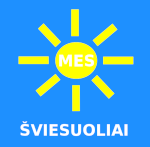Inferring What We Don't Know: A Taxonomy of Paradox
I identify six themes among paradoxes with six different ways that we reorganize thoughts. Paradox is inherent in the gap that arises when we reorganize our thoughts. It is the gap between signifier and signified, as characterized by six equivalences which yield six qualities of signs. Our minds leverage the tensions in these equivalences to shift our attention from what we know to what we don't know. We thus variously clarify what we don't know.
In 1998, I was intrigued by educator Kestas Augutis's vision that every high school student write three books (a chronicle, a thesaurus, and an encyclopedia) so as to master three kinds of thinking (sequential, hierarchical, and network). I thus collected dozens of examples of how we organize our thoughts. Surprisingly, we never use sequences, hierarchies or networks in isolation. Instead, we use them in pairs:
- Evolution: A hierarchy (of variations) is organized with a sequence (of times).
- Atlas: A network (of adjacency relations) is organized with a hierarchy (of global and local views).
- Handbook: A sequence (of instructions) is organized with a network (of loops and branchings).
- Chronicle: A sequence (of events in time) is organized with a hierarchy (of time periods).
- Catalog: A hierarchy (of concepts) is organized with a network (of cross-links).
- Odyssey: A network (of states) is organized with a sequence (of steps).
In general, a first, large, unified, comprehensive structure grows so robust that we restructure it with a second, smaller, different structure of multiple vantage points.
In 2012, I analyzed and grouped all of the paradoxes listed in Wikipedia. This yielded the following six themes:
- Concepts may be inexact. (The paradox of an evolution.) We can't specify exactly at what point in the womb a child becomes conscious, or at what point in evolution two species diverge.
- The whole is not the sum of the parts. (The paradox of an atlas.) If we replace all of the parts of an automobile, and then build a copy with all of the old parts, which is the original?
- Our attention affects what we observe. (The paradox of a handbook.) Achilles can never catch a tortoise if we keep measuring the distance between them.
- There may be a limited contradiction. (The paradox of a chronicle.) How can we reliably learn from one who has ever made a mistake?
- We cannot make explicit all relevant assumptions. (The paradox of a catalog.) 10+4 may equal 2 if we happen to be thinking about a clock.
- We can choose differently in the same circumstances. (The paradox of an odyssey.) "I am lying when I say 'I am lying.'"
Each type of paradox brings to light the essential gap between the (seemingly infinite) primary comprehensive structure and the (manifestly finite) secondary structure which organizes our vantage points. Our mind visualizes a qualitative but illusory relationship between the primary and secondary structures. Upon closer inspection it becomes apparent that there is no definitive way to match up the two structures.
However, these six mental illusions do allow our minds to make tangible that gap, which is to say, that which we do not know. This may be considered as the gap between signified and signifier. Consider four levels of knowledge (whether, what, how, why) in terms of Peirce's types of signs (the thing itself, icon, index, symbol). Then pairs of these four levels yield six qualities of signs. A sign can be:
- Malleable: Equivalent icons refer to the same thing. (Equivalency defined by the paradox of an evolution.)
- Modifiable: Equivalent indices refer to the same thing. (Equivalency defined by the paradox of an atlas.)
- Mobile: Equivalent indices refer to the same icon. (Equivalency defined by the paradox of a handbook.)
- Memorable: The same symbol refers to equivalent indices. (Equivalency defined by paradox of a chronicle.)
- Meaningful: The same symbol refers to equivalent icons. (Equivalency defined by the paradox of a catalog.)
- Motivated: The same symbol refers to equivalent things. (Equivalency defined by the paradox of an odyssey.)
Paradoxes thus heighten and reveal six ways that our minds foster our mental freedom, ever shifting from the structures we know to that gap which models what we don't know.
Paradox
Recent Changes
网站
Įvadas #E9F5FC
Klausimai #FFFFC0
Teiginiai #FFFFFF
Kitų mintys #EFCFE1
Dievas man #FFECC0
Iš ankščiau #CCFFCC
Mieli skaitytojai, visa mano kūryba ir kartu visi šie puslapiai yra visuomenės turtas, kuriuo visi kviečiami laisvai naudotis, dalintis, visaip perkurti. - Andrius
